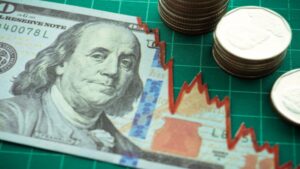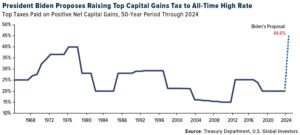A recent runup in food and energy commodity prices failed to boost this morning’s CPI report, which has sent markets higher with investors becoming more optimistic about a potential pause by the Federal Reserve next month. A potentially less hawkish fed is also sustaining optimism that Fed Chairman Jerome Powell and his fellow policymakers may lead the country into a soft landing rather than a full-blown recession. Treasury issuance is weighing at the margins, however, with long-term yields reversing from gains to losses.
The Consumer Price Index (CPI) for July rose 0.2% on a month-over-month (m/m) basis, in-line with expectations. Core prices, which exclude food and energy, also climbed by the same degree, matching the consensus projection. Both headline and core prices increased at the same pace as in June. Year-over-year (y/y) figures reflected slow progress with core inflation, however, with the segment’s prices expanding 4.7% y/y. The headline figure, on the other hand, came in at only 3.2%. Y/y figures grew from 3% in June for headline while declining from 4.8% for core.
Relief at the cash register was led by used automobiles, which registered a 1.3% m/m price reduction. Medical care services, new automobiles and energy services (utilities) declined 0.4%, 0.1% and 0.1% during the period. Shelter costs supported higher prices during the period, however, rising 0.4%. Medical care commodities, transportation services, food at the market and food at dining establishments experienced price increases of 0.5%, 0.3%, 0.3% and 0.2%. Apparel costs were unchanged.
Market Sentiment Moderates After Strong Start
Markets turned bullish this morning with equities higher and yields lower as investors celebrated good news on inflation; however, momentum started shifting once the 10-year Treasury yield pivoted from 3.95% to back above 4% to 4.03%. The equity rally responded by losing steam, paring stronger gains from earlier in the session. The S&P 500 was up over 1.2% to 4527 but is now up only 0.3% to 4479, as bull and bears wrestle it out at the pivotal 4500 point of contention. Sector participation is broad based, however, with all sectors firmly in the green. Shorter duration yields remain lower, driven by a solidified belief that the fed funds rate has peaked with the 2-year maturity down 2 basis points (bps) to 4.79%. The dollar is also dancing in the rhythm of the Fed’s upcoming departure, with the Dollar Index down 18 bps to 102.29. Energy markets are taking a break from their recent rally after India complained of oil price volatility caused in part by Riyadh and Moscow’s desire to keep production subdued. WTI crude oil is down 1.2% to $83.90 per barrel as a result of the Indian complaints.
Consumer Brands Beat Expectations
A handful of consumer-focused companies just posted second-quarter results that exceeded estimates. Alibaba’s revenue of 234.16 billion yuan, or $32.29 billion, climbed 14% y/y, beating the consensus expectation of 224.92 billion yuan, or $31.2 billion. Growth was fueled, in large part, by the e-commerce company expanding into additional countries, resulting in international commerce growing 60% y/y. Alibaba’s net income attributable to shareholders of 34.33 billion yuan, or $4.8 billion, beat the consensus expectation of 28.66 billion yuan or $4 billion and leaped 51% y/y. HanesBrands posted a loss of $0.01 per share, which narrowly exceeded the consensus expectation of a $0.02 loss per share. While its net sales of $144 billion declined 4% on a constant currency basis, the company’s positive free cash flow allowed it to reduce its debt by $100 million. It also reduced its inventory by $255 million y/y. Ralph Lauren Corporation’s earnings per share of $2.34 beat the consensus expectation of $2.15 with revenue increases of 8% and 13% in Europe and Asia, respectively, offsetting domestic weakness.
The Cost of Fighting Inflation
Record Treasury issuance on the back of extended budget deficits is also supporting long-term yields and leaving hopes of fiscal stimulus in the dust.
This morning’s favorable CPI report is helping to alleviate fears of inflation and an overly hawkish fed pushing the country into recession, but results are occurring as corporate earnings and revenues weaken at a time when equity valuations are still high. Real-time data illustrates that many forms of consumption are softening as folks may be losing their spending clout with credit card debt climbing above $1 trillion, pandemic savings almost at zero and student loan repayments set to resume. A significant lag occurs before the full impact of tighter monetary policy gets digested by the real economy, which will begin to bite to a greater extent into year-end. Furthermore, record Treasury issuance on the back of extended budget deficits is also supporting long-term yields and leaving hopes of fiscal stimulus in the dust.
Visit Traders’ Academy to Learn More about the Consumer Price Index and Other Economic Indicators.
Disclosure: Interactive Brokers
Information posted on IBKR Campus that is provided by third-parties does NOT constitute a recommendation that you should contract for the services of that third party. Third-party participants who contribute to IBKR Campus are independent of Interactive Brokers and Interactive Brokers does not make any representations or warranties concerning the services offered, their past or future performance, or the accuracy of the information provided by the third party. Past performance is no guarantee of future results.
This material is from IBKR Macroeconomics and is being posted with its permission. The views expressed in this material are solely those of the author and/or IBKR Macroeconomics and Interactive Brokers is not endorsing or recommending any investment or trading discussed in the material. This material is not and should not be construed as an offer to buy or sell any security. It should not be construed as research or investment advice or a recommendation to buy, sell or hold any security or commodity. This material does not and is not intended to take into account the particular financial conditions, investment objectives or requirements of individual customers. Before acting on this material, you should consider whether it is suitable for your particular circumstances and, as necessary, seek professional advice.


































Join The Conversation
If you have a general question, it may already be covered in our FAQs. If you have an account-specific question or concern, please reach out to Client Services.